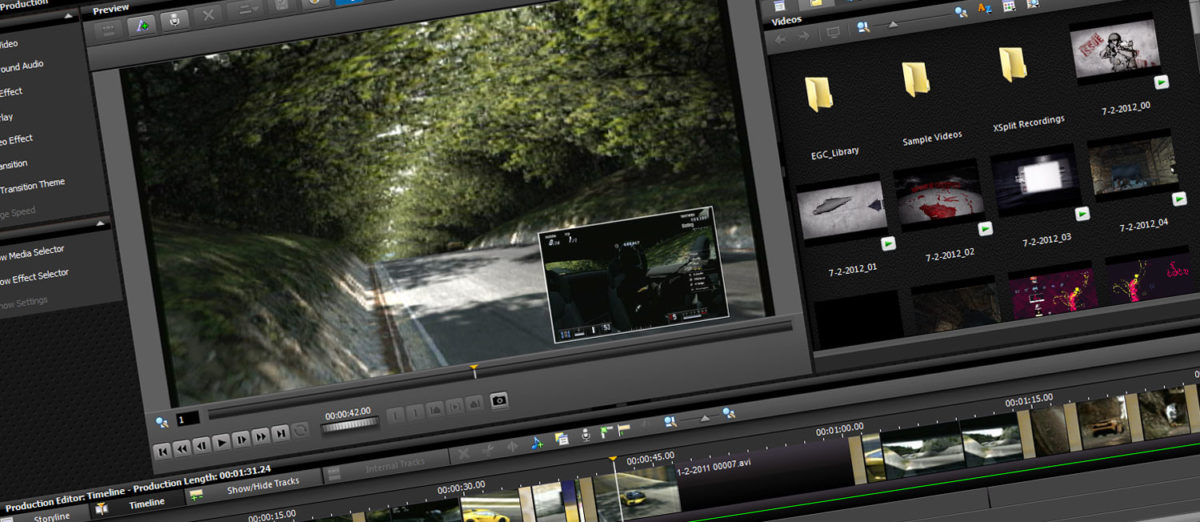Writing a game trailer script for the first time? Worried your writing and formatting skills might not match your secret Hollywood ambitions – or that it’ll take more time than it’s worth?
Relax. Your script doesn’t need to be a great work of literature. You don’t even have to follow screenwriting conventions. You’re simply making a useful document, which will help you (and any collaborators) plan a brilliant trailer.
It won’t take long. And even though think you already know your game’s best bits, writing a script will help you see your game in a new light: from the audience’s perspective.
Here’s what we’ve learned from scripting a few fairly high-profile games recently.
There’s no rocket science in here, just simple pointers on planning and writing your script.
Let’s-a-go.
1. How to choose a style for your trailer
Your script is not just about the action, dialogue and voiceover you’re going to include. It’s also a great planning tool.
The first thing you need to decide before writing is the kind of trailer you’re making.
There are lots to choose from. Gameplay trailers. Cinematic trailers. Teaser trailers. Live action trailers. Specially-animated trailers. Trailers with and without voiceover.
But your choice isn’t a purely creative one. It will depend on the resources at your disposal.
For example, maybe you’d love to make a cinematic trailer. Like the “Open your eyes” spot for the big-selling Zelda: Breath of the Wild.
However, if your game doesn’t have sweeping vistas, voiced dialogue, or orchestral music, that probably won’t be possible.
Don’t despair, though. Here’s another trailer for an equally successful game, Undertale:
Quite a big difference, eh? 8-bit-style graphics and music, text dialogue and captions instead of voice. But still a great trailer.
It’s all about making the best of what you have. Here are some things to ask yourself:
- “Do I have enough gameplay to cut into a trailer?”
If you’re early in development, you might need to make a teaser for now. - “Can I spend anything on new voiceover, art, animation or live action?”
If not, you’ll need to rely on existing assets. - “Do I have scenes or dialogue I can use to introduce the story?”
If not, you might need to make a gameplay-oriented trailer.
Answer questions like these before you write. You’ll give yourself a realistic set of parameters to work within.
2. How to set a goal for your trailer
It might sound obvious: “To get people interested in the game, of course!”
But your trailer is only one stage in your marketing plan. Or, to put it another way, it’s one step on the player’s journey to buying your game.
Where in the journey your trailer fits – at the start, middle or end – should influence your goal.
Here are a few different kinds of game trailers, each with a different goal:
- The teaser trailer: Your release date is a way off, but you’ve got enough material to make a good impression. GOAL: reveal the game and intrigue players.
- The announce/reveal trailer: You’re ready to show the game off. GOAL: announce the game and show players what to expect.
- The follow-up trailer: You’ve already revealed the game and now you want to show off new aspects of gameplay and story. GOAL: build excitement.
- The viral trailer: You’ve got the budget to do something special, fun and non-traditional to promote your game. GOAL: connect with fans who can help you build awareness by sharing the video.
- The release trailer: Your game is launching soon and you want players to know when and where they can buy it. GOAL: drive sales.
The Tekken 7 “Your Fight” (hashtag #TEKKENPARTY!) live-action short is a good example of a viral trailer. It features gameplay, but tells a story outside of the game itself and has a social call to action.
Where to include the call to action, and why
There’s one other thing to decide when setting the goal for your trailer: what do you want viewers to do after they see it? Should they visit your website, go to your Kickstarter page, go buy the game, or something else?
Decide that now. Make sure you include it on your trailer’s end-slate.
4. How to decide what to put in your trailer
There’s one important difference between writing a game trailer script and writing an original screenplay or story.
With an original work, you start with a blank page and work from your imagination. With a trailer, you’re mostly re-arranging existing material.
You can do that in a creative way. And you can add new narration, captions and other stuff. But mostly, your trailer is made of things that already exist.
So, if you want to make your script-writing work much easier, open a new Excel spreadsheet and list all the:
- gameplay moments
- cut-scenes
- dialogue
- music
- and sounds
…that you might want to use in your trailer.
Making a spreadsheet like this is useful for two reasons.
First, it puts all your possible trailer elements in front of you. No racking your brain for what to use. Just pick things off your list and write them into a script.
And second, the list-making process helps you identify your strongest assets. Highlight them as you go, then come back to them when you start writing.
5. How to come up with your trailer creative
That’s the prep work done. You know what kind of trailer you want to make, what your goal is, and what you can put in it. Now it’s time to think of a creative concept.
This is where it’s normal to panic. “What if I can’t think of an idea? What if inspiration never comes?”
The answer is simple: stop trying so hard!
If you have an amazing, original idea that works for your game then great. But there are very few original ideas in the world of game and movie trailers. So, focus instead on your goal and how to make your game look great.
Here are some things you can do to help your creative process:
- Get on YouTube and watch as many game and movie trailers as you can, ideally within your game’s genre. Notice sound and visual techniques that create effects you might want to recreate.
- Write down your game’s 3 strongest selling points. They could include anything from a great lead character, to an intriguing story, to a great musical theme. Build your trailer concept around them.
- Take 30 minutes to brainstorm trailer concepts. Write down everything you think of. When your time is up, cross out the bad ideas and keep 2-3 of the best ones for further development.
Ready? Ok, it’s time to get writing.
5. How to format your trailer script
You don’t have to use the traditional screenplay format (although it’s a good option if you have a lot of dialogue). If you do want to, the BBC has a very good guide.
Another, simpler way to go is to use a table. Here’s a very basic example:
| Type | Action | Music |
| Slate | The GAME LOGO fades in and out on a black screen. | Swelling, tense strings |
| Cut-scene | A dimly-lit medieval CASTLE BEDROOM, NIGHT. A CLOAKED FIGURE carries a frightened CHILD out of the WINDOW. We see heavy rain and LIGHTNING outside. | |
| Slate | WHEN EVIL DESCENDS… | |
| Gameplay | A GRASSY LANDSCAPE, DAY. Sword in hand, our HERO dashes in and dispatches a gang of SKELETON WARRIORS in a fast-cut series of shots. | Bright, up-tempo battle theme |
Ultimately, you need a format that works for you and your collaborators. Every company we’ve worked with has a different way of formatting scripts. Yours will evolve over time.
5. Tips for writing
I don’t want to hamper your creativity by being too prescriptive about what you should write. But here are a few pointers I’ve found useful:
- Write short captions and voiceover: Viewers might not have time to read long text. Wordy voiceover can be hard to follow.
- Keep ideas and language simple: You want to reach the widest audience possible. That means using words everyone can understand. Don’t even try to communicate complex aspects of your game – simplify them as much as possible.
- Choose words with impact: Write captions and voiceover that involve the viewer. Try starting sentences with an imperative (e.g. “Fight evil” or “Test your skills online”) or set the scene with vivid description (“A new evil has emerged”).
- Don’t dwell on one scene or visual: Long, slow scenes can build atmosphere, but you risk losing the audience’s attention. Most trailers cut frequently between shots and locations… because it works.
6. What else to include in your script
Since your script is a working document for you and any collaborators, you might also want to include other bits of useful info.
Here are some sections we’ve included in game trailer scripts, which you might want to consider:
- Approach – Write a paragraph that gives collaborators an overview of your trailer concept and how you want to realise it.
- Key characters – A list of the characters you want to highlight. Useful for other writers and editors.
- Assets and where to find them – Tell your editor (or remind yourself) how to access footage and sounds included in your script. This could be a list of specific shots and sounds.
Good luck with your trailer!
So, there you have it: a straightforward plan for writing your game trailer script.
We’d love to hear your own tips and writing experiences below – and we want to see your completed trailers even more!
Marketing a video game?
We write all kinds of copy for game publishers, developers, retailers and agencies. We’ve even got a page all about what we offer – take a look!
Featured image: screenshot from Roxio Game Capture HD

